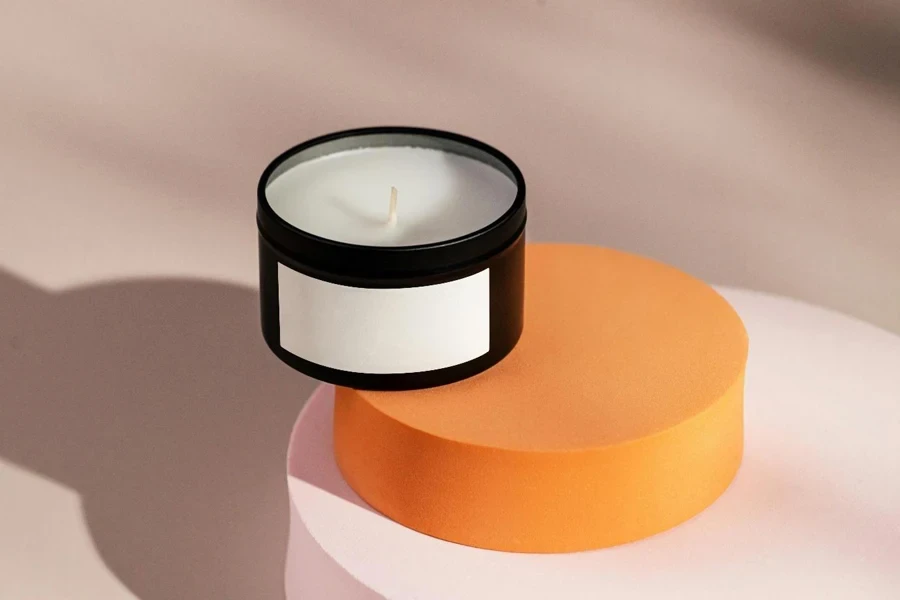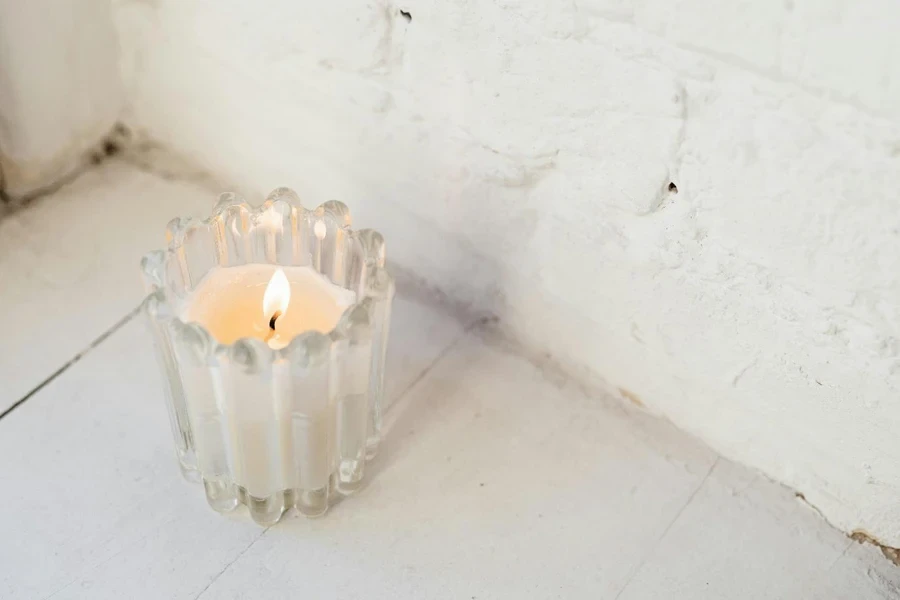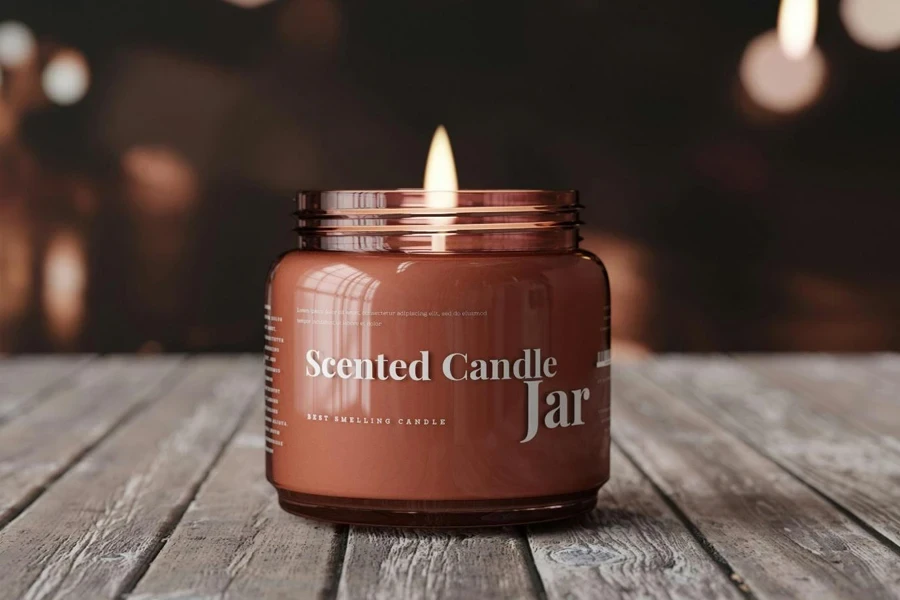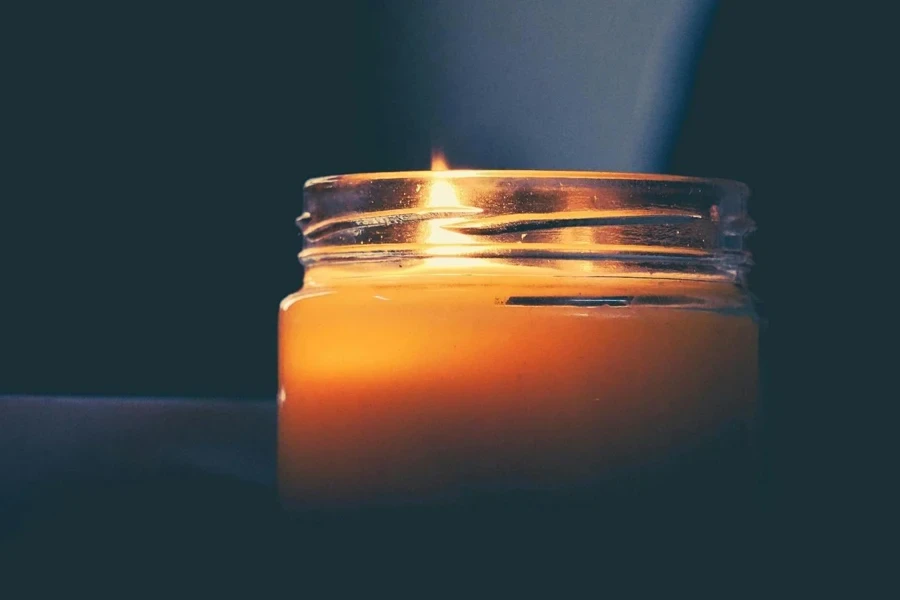Table of Contents
● Introduction
● Market overview
● Different types and their features
● Things to consider when selecting products
● Conclusion
Introduction

Jar candles are vital for enhancing the ambiance and aesthetics of homes by providing light and pleasant scents. The popularity of jar candles is growing quickly due to the rising interest in eco visually appealing goods. Knowing about types of jar candles like soy and beeswax is crucial for retailers and business individuals. Making decisions based on factors such as the quality of materials, favorite fragrances, budget constraints, and logistical considerations can improve customer satisfaction and boost business performance.
Market overview

Market scale and growth
The scented candle industry was worth $3.3 billion in 2023. It is expected to reach $4.8 billion by 2032, with a CAGR of 5.80%. The growth is attributed to the popularity of eco-friendly candles, the expansion of spas and massage centers, and increased consumer interest in home decor trends and interior design aesthetics. Different consumer preferences and environmental considerations are addressed by types of candles, such as paraffin wax candles.
Regional insights
In North America, there is a large portion of the market share due to the popular practice of giving candles as gifts for occasions like birthdays and festivals. Europe comes next with a thriving market for aromatherapy, where scented candles are commonly used in spa and wellness settings. The Asia Pacific region is also growing, driven by cultural and religious events involving scented candles. Moreover, the development of online shopping and new products like water-scented candles are fueling the market growth and creating fresh avenues for businesses operating within it.
Different types and their features

Candle jar styles
Styles of candle jars play a role in both practicality and appearance aspects alike. Glass containers with pressed lids or frosted designs not only enhance the visual appeal but also shield the candle from impurities effectively. Glass boasts heat resistance capabilities and can generally endure temperatures of up to 500°F without any safety concerns when used as a candle holder. On the other hand, tin jars are a more budget-friendly option that provides durability and lightweight attributes, making them perfect choices for candles intended for travel purposes. Each design, whether the square jars or the classic round-footed tins, aims to elevate the appearance and effectiveness of the candle.
Soy wax candles
Soybean wax candles are popular because they are eco-friendly and can be disposed of easily. These candles operate at a temperature that enables them to burn longer and travel far to spread the scent when lit. It is manufactured by hydrogenating soybean oil from liquid form. The normal melting point of soy wax ranges between 120°F and 180°F; hence, it is slow and even burning and frequently does not emit the dark soot common with other waxes, thus improving the air quality in the room.
Beeswax candles
Beeswax candles are known for their unique properties, including clean burning and ingredients. Beeswax, a natural substance obtained from bees, has a melting point of approximately 144°F to 147°F. This higher melting point allows beeswax candles to burn for a long time, delivering a clear and steady flame. Often mixed with other waxes like coconut or paraffin to enhance the burning process and scent diffusion, beeswax candles are an ideal choice for those with allergies.
Paraffin wax candles
Paraffin wax candles are the most popular type. They can absorb a great deal of fragrance oil within them. This wax is generated from petroleum refinement, most of which has a melting point between 120°F and 160°F. I can be molded into various sizes and kinds. Paraffin wax can be produced in the form of slabs, granules, or liquid form, depending on the candle-making techniques that are to be used. Paraffin candle making, though previously a subject of concerns concerning emissions and pollutants, has resulted in modern paraffin candles.
Things to consider when buying candles

Material quality
Choosing top-notch materials guarantees that candles perform well and please customers effectively. An example of this is how the quality of wax can greatly affect how candles burn. Premium paraffin wax usually has less than 0.05% oil content, which helps achieve a cleaner burn. Likewise, high-quality soy wax is hydrogenated to reach a melting point between 120°F and 180°F for stability and scent distribution. Their flash point determines the effectiveness of scent oils, over 140°F, for safe and efficient burning experiences. Choosing containers like borosilicate glass that can handle temperatures up to 500°F enhances the candle’s safety and lifespan.
Fragrance selection
Choosing the scent means grasping the scientific makeup of different candle fragrances. Essential and fragrance oils are grouped based on how fast they evaporate and release their scent profile. For example, citrus oils with notes quickly evaporate to give an instant burst of fragrance that is great for busy areas like kitchens. In contrast, middle notes, like lavender and geranium, have a moderate evaporation rate to provide a lasting aroma suited for relaxation spots and places where pets hang out. Sandalwood and patchouli are known for their scents, which linger long in spaces like bedrooms or relaxation areas due to their heavy molecular weight and slow evaporation rate. These fragrances’ intensity and diffusion ability are influenced by the olfactory strength measured in parts per million (ppm).
Transportation and delivery
The successful transportation and delivery of candles rely heavily on packaging and efficient logistics handling. To protect candles from shocks and temperature changes during transport, materials such as expanded polystyrene (EPS) foam or corrugated inserts can absorb impacts and reduce the risk of damage. Additionally, when packaging candles for shipping, it is crucial to consider the melting point of the wax. For instance, paraffin wax candles should be transported in insulated containers if temperatures surpass 80°F to prevent distortion. Keeping track of shipments and monitoring them in time can effectively control delivery timings and minimize the chances of delays. Applying these methods guarantees that the candles reach their destination in good condition and as scheduled, thereby maintaining customer satisfaction.
Ambience and occasion
Achieving the atmosphere with candles requires a deep grasp of how scents spread and how light behaves around them. The size and material of the candle wick play a role in determining the flame’s size and the brightness level it emits, typically made from cotton or wood. If you’re aiming for an ambiance, opt for a candle with a smaller wick size (like 2 or 3), as this will produce a gentle flame that adds to the cozy and romantic feel. In comparison, though, candles with wicks like 60-ply or 44-ply work better in larger spaces as they give off a brighter light and a stronger scent throw. It’s also important to consider where you put the candles about airflow and room size since this affects how well they work. Placing candles away from drafts helps them burn evenly and spread fragrance consistently. Knowing these details can help you choose and use candles accurately to create the right atmosphere for any event.
Conclusion

Improving the shopping experience and boosting business success in the expanding jar candle market entails grasping market trends and different candle options. It also requires considering key factors in product selection, such as materials used for making candles, packing fragrance choices, pricing methods, and logistical considerations to ensure customer satisfaction and maximize appeal.



